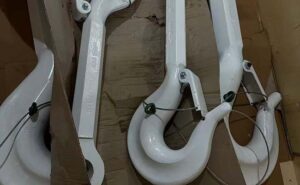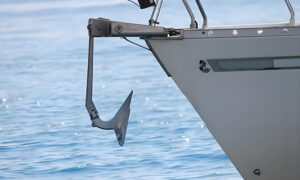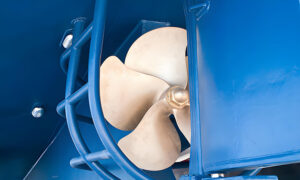Marine lifeboat is a crucial element in maintaining marine safety. Its performance and properties directly influence the security of marine vessels and passengers. That means only if we learn about the features of these ships, we can keep them in optimal conditions for a long time whenever we need them.
Design Standards for Marine Lifeboats at Sea

Marine lifeboats at sea are small vessels used for rescue and emergency escape, which have attracted much attention because of their importance in maritime rescue operations. The design and standards of marine emergency lifeboats at sea are very important to ensure their safety and reliability. The following will introduce several important aspects related to the standards of marine lifeboats for sale.
Size and number of people to be accommodated: The size and number of people to be accommodated in marine lifeboats for sale shall conform to international regulations, so as to ensure that all passengers can be accommodated. Generally speaking, the larger the size of the lifeboat, the more people it can accommodate.
Structure and materials: The structure of the marine traffic lifeboats should be able to resist extreme weather and sea conditions and have certain durability. Lightweight but strong materials, such as aluminum alloy or glass fiber-reinforced plastic, are usually used.
Buoyancy and anti-sinking device: The lifeboat must have sufficient buoyancy to ensure that it can remain stable and not sink in the case of lifting or overturning. Usually, devices such as airbags or sealed cabins are used to provide buoyancy.
Maintenance and inspection of lifeboats: The maintenance and inspection of lifeboats is the key to ensuring their long-term effective and reliable operation. Owners and ship managers are responsible for ensuring that lifeboats are inspected, tested, and maintained regularly, and comply with relevant standards and regulations. This includes the inspection of the appearance, mechanical, electrical, and communication systems of lifeboats, as well as the tests of hoisting, launching, floating, and leaving the water.
Different Types of Marine Lifeboats

Marine lifeboats at sea have various styles, each of which has its own unique function and use occasion. Try to get to know them and choose one that suits your offshore engineering.
Open lifeboat: Open lifeboat is a traditional and commonly used lifesaving equipment. The manufacturing cost is low, and it is often used in emergencies. He is open all around, so boarding is very convenient and fast; In addition, because there is no shelter from objects, people on board can better observe the surrounding situation and facilitate rescue. But the disadvantage of this feature is that this lifeboat is not suitable for use in bad weather, because it can’t resist the attack of external factors and its protection ability is weak.
Free-falling lifeboat (free-falling lifeboat): It is a fully enclosed marine safety equipment with high impact resistance, which is quickly released through gravity slideway, and is mainly used for cargo ships and oil tankers. This lifeboat is usually made of flame-retardant glass fiber reinforced plastic, which is completely closed and internally equipped with resistance fuel, so as to ensure that the hull can still maintain buoyancy when it is broken below the waterline.
Motorized lifeboats: Motorized lifeboats are lifeboats propelled by mechanical power devices, which have the characteristics of quick response, strong power, and complete protection, and are suitable for emergency rescue tasks under complex sea conditions. These lifeboats are designed for all-round protection.
Working Principle of Marine Lifeboats

As the last line of defense to maintain the safety of ships and passengers at sea, it is very important in the field of marine industry. Therefore, understanding the design principle of marine emergency lifeboats is helpful to better use them.
Hull structure: Rescue boats usually adopt a solid and stable hull structure to maintain stability and durability in harsh sea conditions. This can ensure that ships can carry out rescue operations in various climatic and marine conditions.
Drainage system: The rescue boat is equipped with a drainage system, which can effectively discharge the water inside the boat and maintain the stability of the bow and hull. This function is very important for rescuing people from sunken or damaged ships.
Life-saving equipment: The marine lifeboat is equipped with various life-saving equipment, such as life rafts, lifebuoys, and life jackets. These devices can provide means of evacuation, lifesaving, and protection, and ensure the safety of crew and rescued people in an emergency.
Communication system: Marine traffic lifeboats are equipped with efficient and cutting-edge communication systems, including radar, satellite communication, and VHF radio. These systems can connect with other organizations like the rescue teams, command centers, and relevant departments timely and reliably. This method makes sure that these boats can coordinate the rescue actions in time.
Rescue facilities: Marine lifeboats are usually equipped with medical facilities, rescue tools, and equipment, such as stretchers, medical boxes, ropes, and cutting equipment. These facilities can provide first aid and necessary rescue services for injured or rescued people.






